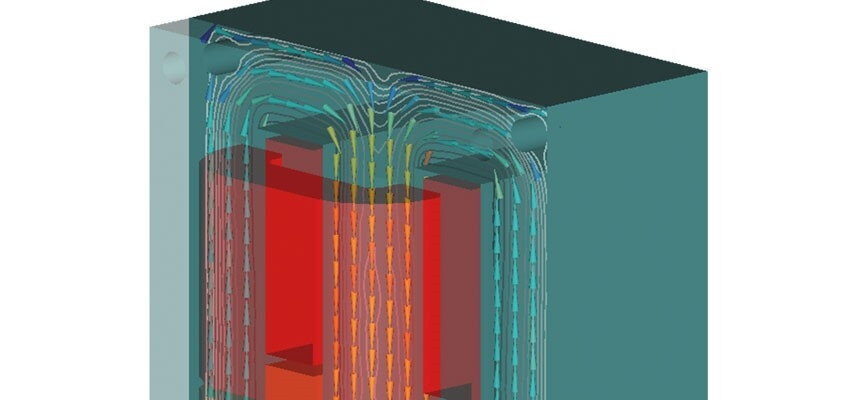
Analysis of power transformer: Transient Analysis of Power Transformer Using FEM
Abstract The article presents the coupled finite element method (FEM) with circuit equations used for analysis of transformers. The magnetic field and the voltages on...
byBruce Klimpke, Chaowei Su

Abstract
The article presents the coupled finite element method (FEM) with circuit equations used for analysis of transformers. The magnetic field and the voltages on windings are coupled together and solved. Three different types of transformers in 2D and 3D were simulated in harmonic case and transient case. The results of currents and voltages on windings are provided. In addition, the magnetic field is displayed. The transient response of three-phase power transformer is simulated for the case of unbalanced loadings and the case of one opened loading. Numerical results demonstrate that the simulation tool with FEM method provides a quick, efficient and reliable way to analyze transformers.
Keywords: FEM, transient field, nonlinear, coupled field-circuit, transformer, inrush currents
Introduction
A transformer is a piece of electrical equipment that transfers electric energy between two or more circuits through coils by electromagnetic induction. A varying current in the transformer’s primary winding creates a varying magnetic flux in the core producing a varying electromotive force (EMF) or voltage in the secondary winding. How to accurately and efficiently predict the currents and voltages on the primary winding and the secondary winding is a challenging problem, especially for cores with non-linear material properties. Numerical modelling techniques for Maxwell’s equations, such as FEM, enable analysis of all important phenomena occurring inside the transformers and exterior to them. This includes the currents and voltages in the windings, the magnetic saturation of the materials, and the generation of heat by the coils and the transformer core losses. In this article, firstly, the coupled field-circuit equation based on Maxwell equation and circuit equation with finite element method in 2D and 3D is presented. Secondly, the scheme of solving transient nonlinear field-circuit coupled model with Newton-Raphson method is outlined. Finally, a simply one-phase transformer, a step-up autotransformer and a delta-to-star three-phase power transformer with different loadings were simulated by Oersted 9.3 in 2D and Faraday 9.3 in 3D.
Electromagnetic field equation for a transformer
The fundamental equation governing the electromagnetic field in a transformer with the stranded windings can be expressed by magnetic vector potential and electric scalar potential V [1]
and electric scalar potential V [1]







